Water Management in Agriculture
Introduction
Water management in agriculture is a crucial aspect of successful farming and involves the control and manipulation of water resources to optimize agricultural productivity. It encompasses a broad range of practices including irrigation management, drainage, flood control, and water storage. The goal of water management in agriculture is to ensure a reliable and sustainable water supply for crops while minimizing the environmental impact of agricultural water use.
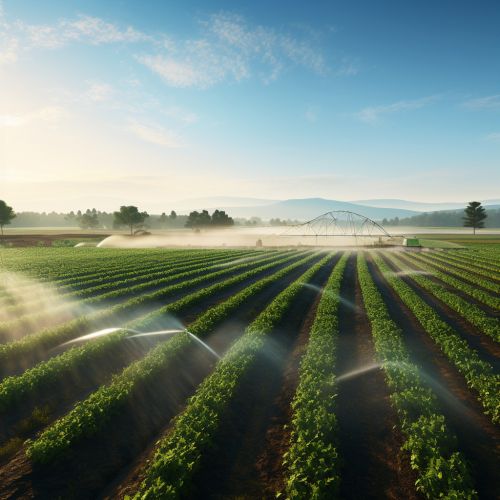
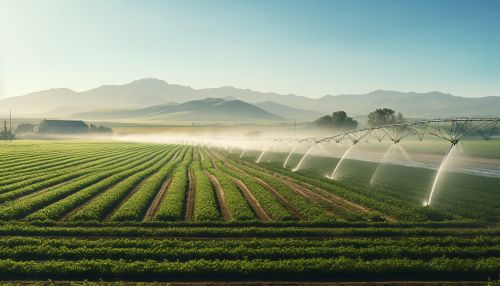
Irrigation Management
Irrigation is a key component of water management in agriculture. It involves the artificial application of water to soil or land to assist in the growth of crops. The primary goal of irrigation management is to use water in the most efficient and sustainable way possible. This involves determining the right amount of water to apply, the best time to apply it, and the most effective method of application.
There are several types of irrigation systems used in agriculture, including surface irrigation, drip irrigation, and sprinkler irrigation. Each of these systems has its own advantages and disadvantages, and the choice of system depends on factors such as the type of crop, the soil characteristics, and the availability of water.
Surface Irrigation
Surface irrigation is the oldest and most common form of irrigation, where water is applied directly to the soil surface from a channel located at the upper reach of the field. The water then flows over the field by gravity, spreading over the surface and infiltrating into the soil. The efficiency of surface irrigation depends on the uniformity of the water distribution, which can be affected by the slope of the field, the soil type, and the flow rate of the water.
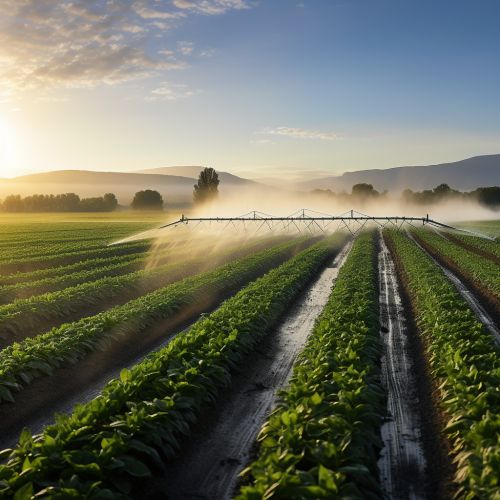
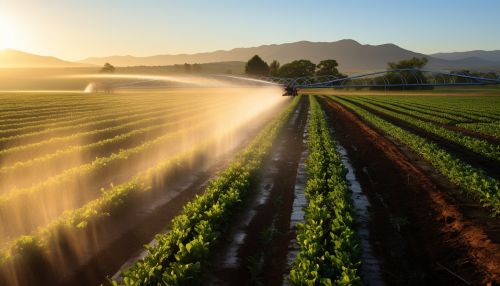
Drip Irrigation
Drip irrigation, also known as trickle irrigation, involves the slow application of water directly to the root zone of plants. This method is highly efficient as it minimizes evaporation and runoff. Drip irrigation systems consist of a network of tubes, pipes, and emitters that deliver water directly to the base of the plant. This method is particularly suitable for areas with water scarcity or for crops that require precise water management.
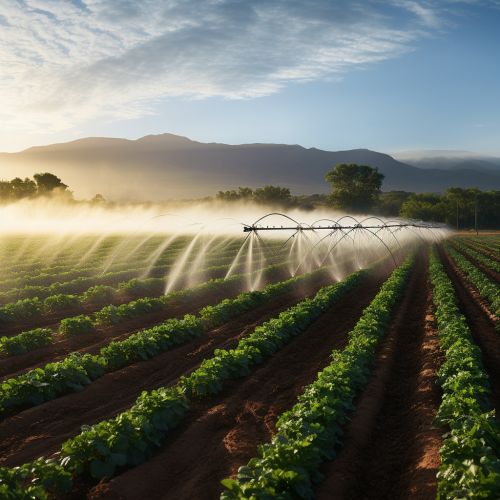
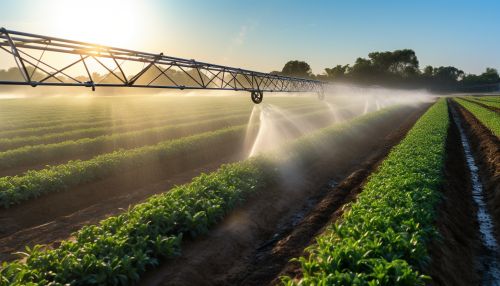
Sprinkler Irrigation
Sprinkler irrigation is a method of applying water to crops in a manner similar to natural rainfall. Water is distributed through a system of pipes and sprayed into the air through sprinklers so that it breaks up into small water drops which fall to the ground. Sprinkler irrigation can be used on uneven land where sufficient water is not available for surface irrigation.

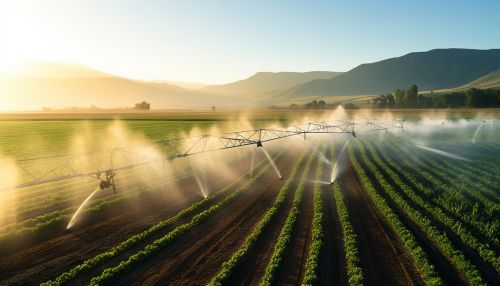
Drainage Management
Drainage management in agriculture involves the removal of excess water from the soil surface and sub-surface. This is crucial for preventing waterlogging and salinization of agricultural lands, both of which can be detrimental to crop growth. Effective drainage systems help to maintain a balance in the soil-water-air system, which is essential for optimal crop growth.
There are two main types of drainage systems used in agriculture: surface drainage and subsurface drainage.
Surface Drainage
Surface drainage involves the removal of excess water from the soil surface to prevent waterlogging. This is typically achieved through a network of ditches or channels that carry away the excess water. Surface drainage is particularly important in areas with heavy rainfall or in fields with poor natural drainage.
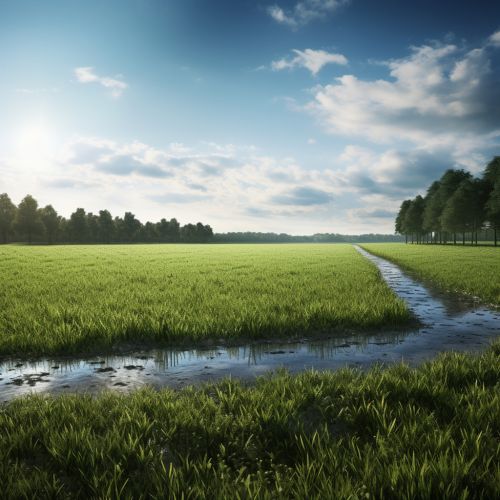
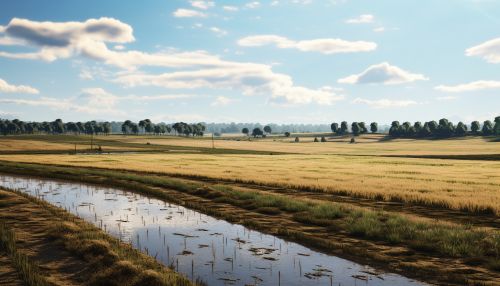
Subsurface Drainage
Subsurface drainage involves the removal of excess water from the root zone of plants. This is typically achieved through a network of pipes or tiles buried beneath the soil surface. Subsurface drainage is particularly important in areas with high water tables or in fields with heavy clay soils.
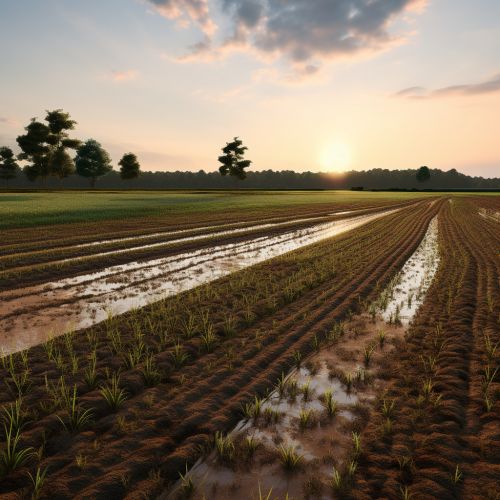

Flood Control
Flood control in agriculture involves the implementation of measures to reduce or prevent the damaging effects of flood waters on agricultural lands. This can involve structural measures such as the construction of levees, dikes, and reservoirs, as well as non-structural measures such as flood forecasting and warning systems.
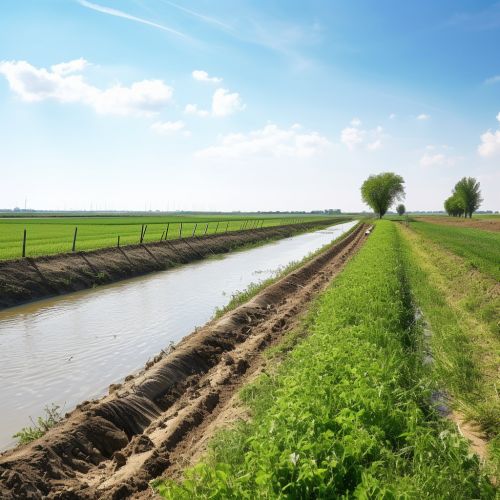
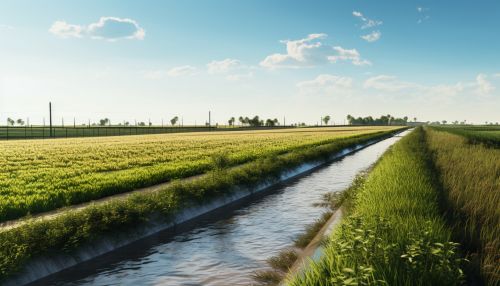
Water Storage
Water storage in agriculture involves the collection and storage of water for use during periods of water scarcity. This can be achieved through the construction of reservoirs, tanks, and ponds, as well as through the use of underground water storage techniques such as aquifer storage and recovery.


Conclusion
Water management in agriculture is a complex and multifaceted field that requires a deep understanding of hydrology, soil science, agronomy, and environmental science. As the global population continues to grow and the demand for food increases, the need for efficient and sustainable water management practices in agriculture will become increasingly important.
